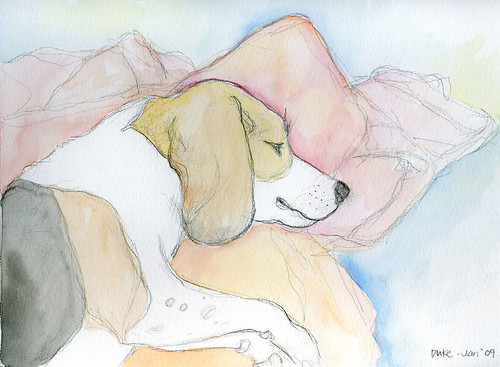
After a year hiatus, Duke's back at school! Today was his first day for the Practical Living class at Who's Walking Who, Toronto campus.
The actual class content is a good refresher for Duke, and will be good finishing work, but the main reason why we're there is to expose Duke to as many dogs as possible in a difficult environment to help with his on-leash aggression.
This class is extremely challenging for that aspect, because it is a full house (10+ dogs) in the class prior, and a full house itself (10+ dogs in our class) meaning that Duke has to manage himself in a small room where 20 dogs will go by him at some point in the night. We did not go without some howling - but he only howls when dogs start getting very close. By the end of the 6 week program Duke should be able to sniff and greet many of the dogs in class.
The agenda for tonight:
1) Loose leash walking
2) Heel - with an auto-sit. A good tip we were reminded of was to guide Duke's face away from us for the finish for a nice straight sit (not a lazy 45 degree sit, like we've been tolerating - n.b. he had this problem in Sept 2007 too at Step Ahead, but shame on us for not tightening it up)
3) Sit, stay, and pat on the head, and return
4) Sit, stay, circle Duke, and return
5) Dog bowl manners - place a bowl of food on the floor and expect an auto-sit stay (easy)
All the instructors in class know about Duke's behavioral problem so they were very helpful. We were reminded of some very important points:
1) Reward for the absence of inappropriate behavior. For example, Duke in a down stay while we're listening to the instructor tends to whine. This is actually a behavior he's always had and has nothing to do with on leash aggression. We should wait for a pause in his whining, and mark and praise the quiet. Gradually we would only reward for lengthy periods of quiet.
Applying this principle to on-leash aggression - we should mark and reward for a variety of behaviors, such as sniffing, or avoidance, in the presence of other dogs - not just a watch behavior. If Duke ever makes contact with a dog on leash we MUST mark and reward for that - it is too big of a breakthrough to let go unnoticed.
2) Rewards must always follow markers. For example, in the case of the sit command, we no longer mark and reward for all sits - but IF we choose to mark (YES or click) then we MUST reward. Random reinforcement means the random application of a mark AND reward, not the random application of the reward.
3) A suggestion is we should practice the approach and touching on leash of another dog by getting dog friends to help out. These exercises are well covered in Click to Calm by Emma Parsons and Aggression in Dogs by Brenda Aloff. I need to get serious about getting friends to help out here.
Duke's little brain must be very tired! He aced the obedience exercises but the real challenges lie ahead... like "Meet and Greet" another dog on leash. Duke, you can do it!!!!



